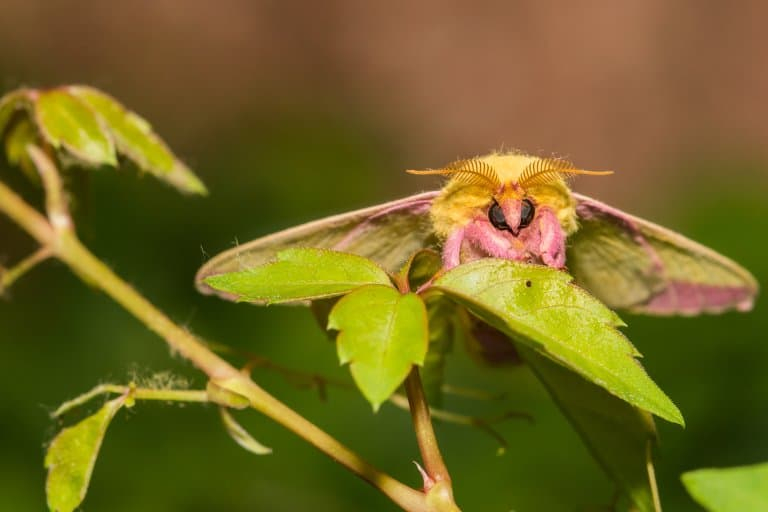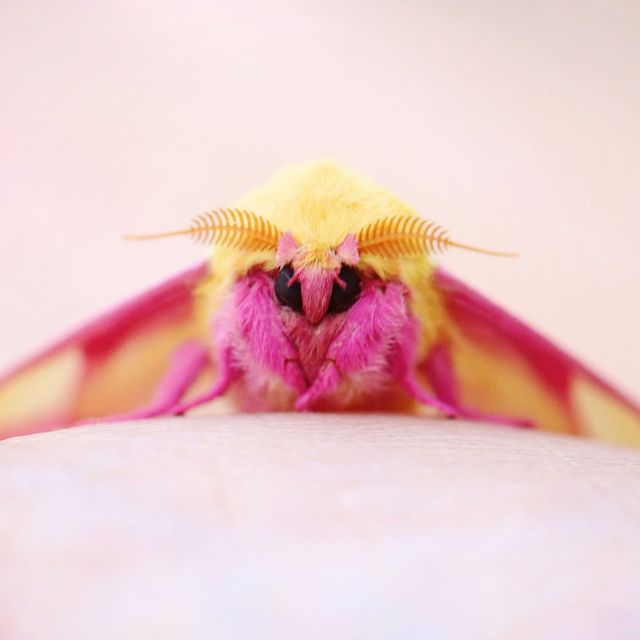Rosy Maple Moth

A member of the silk moth family, which includes some of the most stunning insects, is the Rosy Maple Moth. The rosy maple moth does not do a lot of damage. In extreme situations, a single host tree may have hundreds of ravenous caterpillars feasting on leaves. The larvae can harm maple trees. The tree is normally not harmed by this, although it could become unsightly because the tree could end up partially or completely barren. If the tree is a sapling or otherwise stressed, this defoliation may be harmful to it.
The vibrant hues of the rosy maple moth serve as a reliable indicator. It comes in a variety of colors, including cream, white, pink, yellow, and purple. However, it appears that the pink and yellow variant is the most popular. The adult moth is thick and fuzzy, and the males have long, comb-like antennae that they use to detect the pheromones, which are chemicals released by females to attract males, in the air. Regardless of gender, the rose maple moth is regarded as the tiniest of silk moths. Males are smaller than females, and adults can measure up to 2 inches across when the wings are spread.











